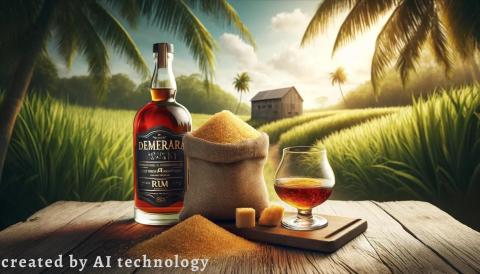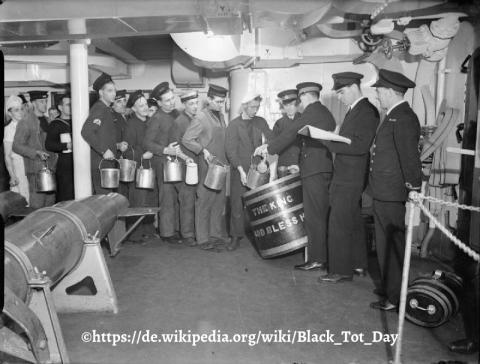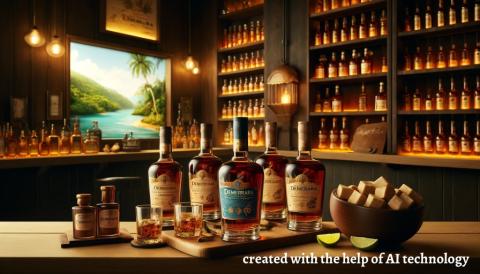Introduction
Guyana, a small country on the northern coast of South America, holds a treasure trove of history and culture, particularly in the world of rum. Despite its geographical location in South America, Guyana is a proud member of the Caribbean Community (CARICOM) and is unique in being the only country in South America where English is the official language. The Demerara region, famous for its rich and distinctive rum, is also renowned for producing Demerara sugar, a golden-brown sugar with a rich molasses flavor that has been highly sought after for centuries. Both the rum and sugar industries have been cornerstones of the region for centuries.
Image

In this post, we'll explore the captivating story of Guyana and its legendary Demerara rum.
Geography and Climate
Guyana, often referred to as the "Land of Many Waters," is characterized by its lush landscapes and tropical climate. Nestled between Venezuela, Brazil, and Suriname, Guyana's fertile land and warm, humid weather create the perfect conditions for sugarcane cultivation. The abundant waterways, including the mighty Demerara River, play a crucial role in the transportation and production of rum.
The region's canal system, introduced by Dutch settlers, is a testament to their engineering skills. These canals not only facilitated efficient irrigation and transportation but also helped manage the region's water levels, protecting the fertile agricultural land from flooding.
The Dutch influence remains strong in Guyana, visible in place names such as Uitvlugt, a name that harks back to the Dutch colonial era and is now synonymous with high-quality rum production.
History of Demerara Rum
The history of Demerara rum dates back to the 17th century when Dutch settlers first established sugar plantations along the Demerara River. Over time, the region became synonymous with high-quality rum production. In Guyana, the typical estate model was prevalent, where each estate comprised land with sugarcane fields, a sugarcane mill, and a small distillery. This integrated approach ensured the efficient production of sugar and rum, with each estate managing its entire production process.
In the early 19th century, the British took control of Demerara, merging it with neighboring colonies to form British Guiana. This transition brought new technologies and practices that further enhanced rum production in the region and from the early 1800s to the 1960s, Demerara became the workhorse of the British Empire for meeting its vast rum demand.
In the beginning of the 19th century, Guyana produced 2 million gallons of rum, which was close to Jamaica's production levels. It didn't take long before British Guiana was producing four million gallons and eclipsing Jamaica's rum production.
However, after British Guiana gained independence in 1966 and became Guyana, the rum industry experienced a decline due to the socialist movement forced by Guyana's government. The industry faced nationalization and significant changes in management and operations, leading to reduced production and quality. Additionally, "Black Tot Day" in 1970, when the British Royal Navy ended its daily rum ration, significantly impacted the demand for Guyanese rum, further contributing to the industry's decline.
Image

The unique combination of rich soil, ideal climate, and skilled craftsmanship continued to lead to the creation of some of the world's finest rums. Key historical milestones include the establishment of several iconic distilleries and the development of distinctive production methods.
Unique Characteristics of Demerara Rum
Demerara rum is known for its rich, full-bodied flavor, a result of traditional production methods and meticulous aging processes. One of the most distinctive features is the use of wooden pot stills, a technique preserved for generations. Wooden stills, you might ask? Yes, while distilling typically involves some copper, the kettle itself does not necessarily need to be made of it. In the Caribbean, copper was expensive, but there was an abundance of greenheart wood. This type of wood is durable and resistant to rot when submerged in water, making it an ideal material for stills. Many pot stills and even column stills in Guyana were made of greenheart wood. Some of these wooden stills have survived to this day and are used at Demerara Distillers to produce traditional style rums, such as the wooden pot still of Port Morant and Versailles.
For those interested in learning more about these wooden stills, you can read further the great article by Matt Pietrek.
Notable Distilleries in Demerara
At the beginning of the 20th century, British Guiana had 44 operational rum distilleries. By the 1960s, this number had decreased to eight distilleries. These eight distilleries were:
- La Bonne Intention: Closed in 1959.
- Skeldon: Closed in 1960.
- Blairmont: Closed in 1962.
- Albion: Closed in 1968.
- Versailles: Closed in 1978.
- Enmore: Closed in 1994.
- Uitvlugt: Closed in 1999.
- Diamond: Still operating.
It's important to note that even when these distilleries closed, the associated sugar factories often remained in operation, as was the case with Albion and Uitvlugt.
Conclusion
Guyana and its Demerara region hold a special place in the world of rum. The combination of rich history, unique production methods, and exceptional quality make Demerara rum a true gem. In future posts, we will dive deeper into the individual distilleries, explore the lost distilleries, and uncover the whereabouts of the historic distilling equipment. Stay tuned as we continue to explore this remarkable legacy.
Further Reading
Much of the information in this post is drawn from the book Modern Caribbean Rum by Matt Pietrek and Carrie Smith. For a more comprehensive exploration of the topic, you can find the book here.
For Rum lovers in Germany we recommend to order at Armagnac.de.


